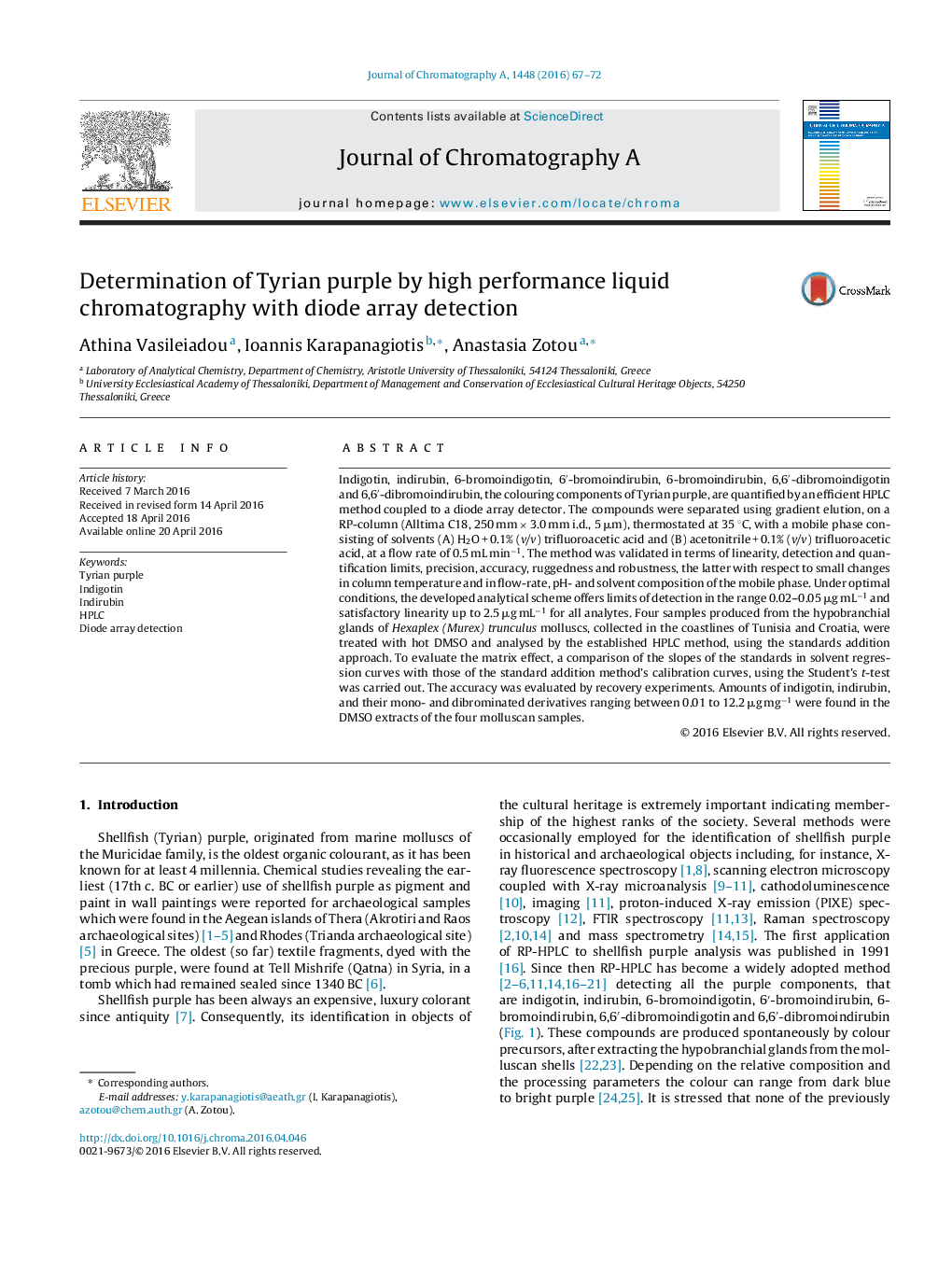| Article ID | Journal | Published Year | Pages | File Type |
|---|---|---|---|---|
| 7610089 | Journal of Chromatography A | 2016 | 6 Pages |
Abstract
Indigotin, indirubin, 6-bromoindigotin, 6â²-bromoindirubin, 6-bromoindirubin, 6,6â²-dibromoindigotin and 6,6â²-dibromoindirubin, the colouring components of Tyrian purple, are quantified by an efficient HPLC method coupled to a diode array detector. The compounds were separated using gradient elution, on a RP-column (Alltima C18, 250 mm Ã 3.0 mm i.d., 5 μm), thermostated at 35 °C, with a mobile phase consisting of solvents (Î) H2O + 0.1% (v/v) trifluoroacetic acid and (Î) acetonitrile + 0.1% (v/v) trifluoroacetic acid, at a flow rate of 0.5 mL minâ1. The method was validated in terms of linearity, detection and quantification limits, precision, accuracy, ruggedness and robustness, the latter with respect to small changes in column temperature and in flow-rate, pH- and solvent composition of the mobile phase. Under optimal conditions, the developed analytical scheme offers limits of detection in the range 0.02-0.05 μg mLâ1 and satisfactory linearity up to 2.5 μg mLâ1 for all analytes. Four samples produced from the hypobranchial glands of Hexaplex (Murex) trunculus molluscs, collected in the coastlines of Tunisia and Croatia, were treated with hot DMSO and analysed by the established HPLC method, using the standards addition approach. To evaluate the matrix effect, a comparison of the slopes of the standards in solvent regression curves with those of the standard addition method's calibration curves, using the Student's t-test was carried out. The accuracy was evaluated by recovery experiments. Amounts of indigotin, indirubin, and their mono- and dibrominated derivatives ranging between 0.01 to 12.2 μg mgâ1 were found in the DMSO extracts of the four molluscan samples.
Related Topics
Physical Sciences and Engineering
Chemistry
Analytical Chemistry
Authors
Athina Vasileiadou, Ioannis Karapanagiotis, Anastasia Zotou,
